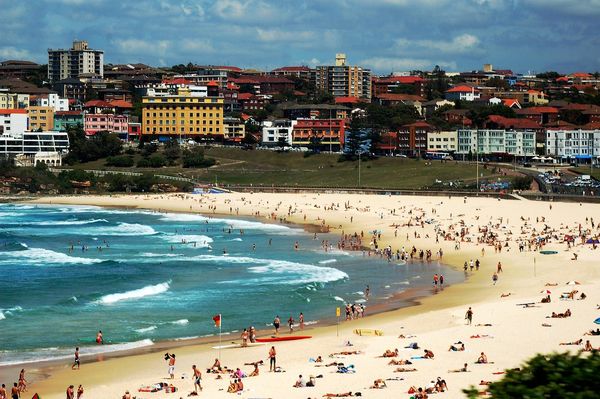
Everyone – so it seems – is currently ‘out East.’ But where exactly is ‘East,’ and what does it actually look like? Just outside of New York City, these small, idyllic coastal towns become full-blown second cities every summer – dotted with luxury brand pop-ups from Armani, $150 chicken tender plates, and, ironically, gridlock worthy of Midtown.
But the East Coast is more than its seasonal coastal scene. We love it because of the Nancy Meyers aesthetic – that all-American, salty-aired New England aesthetic, immortalized in her movies and otherwise known as 'Eastcoastal.'
Homes & Gardens recently sat down with designer Jess Weeth – principal and co-founder of Weeth Home – who, based in Rehoboth Beach, Delaware, is a bona fide Eastcoastal native and an expert in the area's signature interior design style.
Eastcoastal, Jess says, is less about literal coastal decor ideas and motifs and more about a mood – a balance of old-world charm and lived-in ease. ‘We find Eastcoastal where heritage tradition meets the barefoot ease of living near the water,’ she explains. ‘Classical bones and vintage pieces that carry weight and architectural interest, balanced with liveable, unfussy interiors that create a sense of carefree living.’

It’s about layering eras to create interiors that feel like they’ve always been there and will keep evolving for the next generation. Think Diane Keaton’s shingled Hamptons house in Something’s Gotta Give (2003) (‘an iconic East Coast summer home,’ says Jess) or the happy accident styling of Kate Winslet’s English cottage in The Holiday (2006).
Where Jess lives in the Mid-Atlantic, you can head south for tropical, colorful influence or go north for older, more traditional architecture and maritime details over literal beach decor. Her own work is a mix: ‘We get to pull from the traditional and preppy elements of the north, while embracing a more rustic, casual feeling as an escape from the bustle of life in the surrounding cities.’
Here Jess shares six ways to bring this nuanced, nautical summer trend home – from someone who actually lives it.

1. Stripes

Decorating with stripes is a coastal cliché for a reason, but they don’t have to feel like one. ‘Textiles are often the foundation of our designs, and a beautiful stripe helps set the tone for a coastal space,’ says Jess. ‘The key is to avoid the more traditional bright blue and crisp white umbrella stripe.’
‘Instead, look for softer colors and an unexpected stripe layout. We love it when a motif – such as a vine or floral – repeats to create a stripe (which we affectionately refer to as a “non-stripe stripe”).’
A far cry from high-contrast cabana varieties, Pierce & Ward’s West Elm collab delivers a softer, more Mid-Atlantic-friendly interpretation.
2. Unexpected blue

You’ve heard of the ‘unexpected red’ theory. Here, we’re swapping in another primary: blue. ‘We try to take this traditional coastal staple, but do it with a twist,’ says Jess.
That twist comes from depth, not brightness. ‘We are always looking for blues that have mood and complexity, versus the more expected bright, punchy blues. From Benjamin Moore Water’s Edge to Boothbay Gray – or even Phillip Jeffries’ Fuji Weave wallpaper in Mountain Mist – there are several hues I love that can read blue in some lights, but in others, they have that grey-green of the sea.’
Skip the overdone nautical navy and experiment with shadowy shades instead. Jess says place them where people don’t expect – why not the floor?
3. Woven textures

Eastcoastal is the definition of airy and easy, which makes it fertile ground for anything woven. The Eastcoastal look might be a neutral one, but the interest and depth come from the layers of textures.
‘Whether it’s a jute rug, a vintage rattan lamp with a matching shade, or even a rush seat on a chair, a hit of natural woven material provides warmth and an informal, casual feeling,’ says Jess.
You wouldn’t expect light-and-breezy rattan to work with such a substantial silhouette, but Joanna Gaines proves otherwise – a serendipitous marriage of coastal and cool that's so Eastcoastal.
4. Warm woods

If you’re choosing wood tones, and want to create that Eastcoastal vibe, then go warm. ‘Hits of clean white oak have their place, but I find leaning too heavily on it can feel more West Coast than East Coast,’ Jess explains.
Instead, she suggests richer stains, the kind that play against creamy millwork and crisp fabrics. ‘A walnut island can ground a kitchen, and antique wood pieces can make a room feel instantly cozy.’
Crafted from reclaimed pine, this pedestal brims with character. Variations in tone, grain, knots, and the occasional imperfection lend a grounded counterpoint to something crisp – say, a porcelain vase spilling over with blue hydrangeas.
5. In with the old

In Eastcoastal design, so-called 'old' or 'dated' interior features are stories you can’t buy. ‘If you have brick – interior or exterior – try limewashing it for a textured, brighter finish that still feels weathered,’ says Jess. Painted floors work the same magic.
But if a full-blown renovation is off the table, the shortcut to bringing in the old is decorating with vintage pieces. ‘Pair a new sofa with a side table that’s seen a few decades,’ she suggests. Her sources run from The Expert and Chairish to 1stDibs, but also flea markets, estate sales, and local thrift shops.
‘The key is not trying to make things too perfect – lean into the quirks of a vintage side table, an interesting oil painting, or little collections of found objects,’ she muses.
It’s not actually aged, but this cotton mache has that perfectly imperfect, handmade look squarely in the wheelhouse. Pressed, painted, and dimmed by artisans, it sets just the right tone.
6. Strategic shells

Clichés would have you believe that Eastcoastal might entail entire chair legs carved into scallop shells. The reality is much quieter. ‘In our waters, you’ll find mussels, clams, oysters, a conch here and there – all sun-bleached by the mix of salt and brackish water,’ says Jess. Keep your shells soft and muted to follow suit.
‘I love finding subtle ways to incorporate shell motifs – a small shell sewn into a jute tassel, an antique engraving or print, or even a fabric (Shell Grotto by Fermoie is stunning).’
‘We’ve been on a kick for the past couple of years collecting vintage shell dishes,’ says Jess. She recommended this exact brass Etsy gem, circa 1950. ‘They are great as a catchall for an entry or bedside table, or as decor for a cocktail table or ottoman,’ she adds.
Of course, we had to ask: what’s on Jess’s Labor Day agenda – and is she tweaking anything at home for the final seconds of summer?
Right now, the limelight hydrangeas outside her window are fading from white to dusty rose. ‘I love doing big cuttings for table arrangements, then prepping them to dry so I can use them all winter,’ she says. Inside, the calendar is packed with last hurrahs: dinners, drinks, friends and family spilling from the kitchen to the deck.
‘As the nights start to feel cooler, we keep the windows and doors open so there’s this seamless flow between indoors and out,’ she adds. ‘Labor Day is about holding onto the last bits of summer before the seasons really change. The days are shorter, but the sunsets – they’re some of the best golden hours of the year.’







